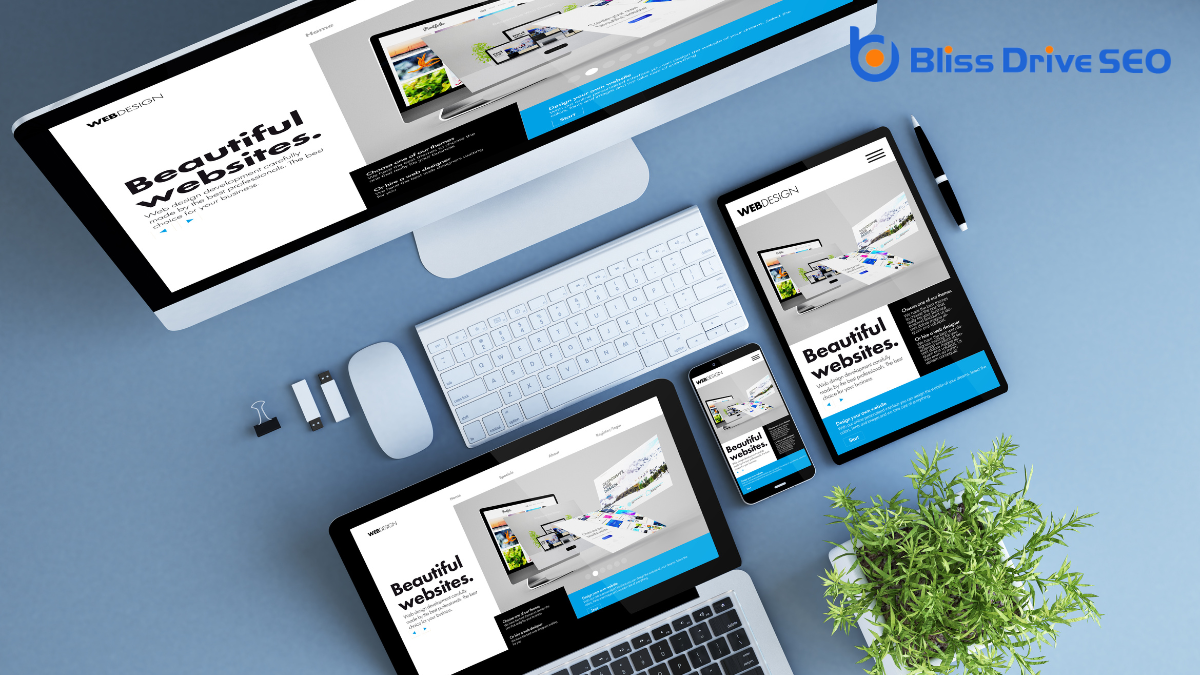Digital Marketing Services
Learn More About Us

When you're starting to build a website, the software you choose can greatly impact the process and outcome. You might wonder about the best tools for your needs, whether you're looking at user-friendly website builders like Wix or Squarespace or considering a more flexible option like a CMS such as WordPress. Then there's the question of handling the code with editors like Visual Studio Code. But what about the role of design software and e-commerce platformsSoftware solutions that allow businesses to create and manage online stores, such as Shopify, WooCom... in shaping your site? The choices you make could set the tone for your entire project, so let's explore your options further.
When it comes to building a website, understanding Content Management Systems (CMS) is vital. A CMS allows you to create, manage, and modify content on a website without needing extensive technical knowledge.
It's a powerful tool that simplifies the process considerably. With a CMS, you can handle everything from adding text and images to organizing your site's structure with ease.
Imagine not having to write code every time you want to update your site. Instead, a CMS provides a user-friendly interface to make changes quickly.
Popular CMS options like WordPress, Joomla, and Drupal offer flexible features to cater to various needs. Each system has its strengths, so it's important to choose one that aligns with your specific requirements and comfort level.

Steering through the world of website builders can feel like opening a toolbox filled with innovative solutions. These tools are designed to help you create a stunning website without needing to write a single line of code.
Website builders like Wix, Squarespace, and Weebly offer user-friendly interfaces, allowing you to drag and drop different elements to customize your site. They're perfect if you're looking to get a site up and running quickly, with minimal technical fuss.
With website builders, you can choose from a variety of templates tailored to different industries or personal styles. This means you won't have to start from scratch, which saves you time and effort.
Plus, most builders offer responsive designs, ensuring your site looks great on both desktop and mobile devices.
Another advantage is the integration of additional features like SEO toolsSoftware and online tools used for various aspects of SEO, such as keyword research and link buildin..., e-commerce capabilities, and analyticsThe systematic computational analysis of data or statistics to gain insights and support decision-ma.... These built-in options make it easier to optimize your site for search engines, set up an online store, or monitor visitor traffic.
While website builders might lack the deep customization that coding offers, they provide a straightforward path for anyone wanting a functional and attractive online presence.
Diving into the domain of code editors opens up a world of creative possibilities for building websites. Code editors are your gateway to writing, editing, and managing the code that forms the backbone of any site. They offer a streamlined environment where you can write HTML, CSS, JavaScript, and other programming languages essential for web development.
By using a code editor, you gain complete control over your code, allowing for customization and optimization that pre-built templates can't match.
Choosing the right code editor can enhance productivity and efficiency. Popular options like Visual Studio Code, Sublime Text, and Atom provide features such as syntax highlighting, auto-completion, and error detection. These tools make coding more intuitive and less error-prone.
You'll find that they support extensions and plugins, which expand their functionality to suit your specific needs.
A quality code editor helps you maintain a clean and organized codebase. It encourages best practices by making it easier to spot mistakes and optimize code for better performance.
With the right code editor, you can transform your website ideas into reality, bringing them to life with precision and a personal touch.
When you're building a website, using popular design tools like Adobe XD and Sketch can streamline your workflow and enhance creativity.
These tools not only help with creating stunning visuals but also allow for user interface prototyping, giving you a clear picture of how your site will function.
With their intuitive features, you can efficiently turn your ideas into interactive designs.
Whether you're a seasoned designer or just starting out, choosing the right design tools can make a significant difference in creating a visually stunning website. With a variety of options available, it's important to select tools that fit your workflow and design needs.
Adobe XD is a popular choice known for its powerful design capabilities and seamless integration with other Adobe products. It provides features like vector design and prototyping, making it ideal for creating detailed layouts.
If you're looking for something more collaborative, Figma stands out. Its web-based nature allows multiple users to work on a project simultaneously, fostering teamwork and real-time feedback.
Sketch is another top contender, especially favored by macOS users. It's particularly strong in creating user interface designs with its extensive library of plugins.
Canva, on the other hand, is perfect if you prefer a more straightforward approach. It's user-friendly and offers a wide array of templates, making it easy to create attractive visuals without diving deep into design complexities.
Each tool has its strengths, so consider what aligns best with your project goals and personal preferences. The right choice will enhance your creative process and help you build enchanting websites.
While design tools are essential for crafting appealing websites, user interface prototyping software takes your ideas from concept to a tangible digital experience. You don't just design, you experiment and interact. With these tools, you can create clickable wireframes and mockups that simulate the final product. This helps you visualize the user journey and refine the layout before any code is written.
Tools like Figma, Adobe XD, and Sketch are popular choices. Figma offers real-time collaboration, which is perfect if you're working with a team. You can see changes live and give feedback instantly.
Adobe XD provides seamless integration with other Adobe products, making it a versatile addition if you're already using their suite. Sketch is known for its robust plugin ecosystem, allowing you to customize your workflow.
Prototyping tools save you time and resources by highlighting design flaws early in the process. They let you test functionality and user flows, ensuring the final product is intuitive and user-friendly.

When you're setting up an online store, choosing the right e-commerce platform is essential.
You'll find popular options like Shopify and WooCommerce that offer robust customization and flexibility to tailor your site to your needs.
Plus, these platforms provide various payment integration choices, making it easier for you to manage transactions smoothly.
Steering through the vast array of e-commerce platforms can feel overwhelming, but knowing your options is the first step to success. When you're choosing an e-commerce platform, consider some popular choices like Shopify, WooCommerce, and BigCommerce. Each offers unique features that cater to different business needs.
Shopify is a great option if you're looking for an all-in-one solution. It provides everything from payment processingThe handling of credit card transactions and other payment methods. to inventory managementThe process of ordering, storing, and using a company's inventory, including raw materials, componen..., making it ideal for beginners or those who prefer a straightforward setup. You won't need to worry about technical details, and you can easily expand your store with apps.
WooCommerce, on the other hand, is a WordPress plugin. It's perfect if you already have a WordPress site or want full control over customization. You'll need some technical know-how, but the flexibility and community support make it a solid choice for growing businesses.
BigCommerce offers more built-in features compared to Shopify and WooCommerce, making it suitable for larger enterprises. It supports various sales channels and provides advanced analytics to help you track performance.
Ultimately, understanding your business needs and technical abilities will guide you to the right e-commerce platform for your online store.
Choosing the right e-commerce platform goes beyond just listing features; it's about how customizable and flexible it is to meet your unique business needs.
When you're setting up your online store, you want a platform that allows you to tailor the experience not just for your brand but for your customers as well.
Here are four critical aspects of customization and flexibility you should consider:
Steering through the myriad of payment integration choices on e-commerce platforms can be intimidating, but it's essential for ensuring seamless transactions. As you commence on this journey, the key is to prioritize reliability, security, and user-friendliness.
You'll encounter popular options like PayPal, Stripe, and Square, each offering unique features and benefits. PayPal is known for its widespread acceptance and ease of use, making it a favorite among both consumers and businesses. Stripe, on the other hand, is favored by developers due to its flexibility and robust API, allowing for more customized payment solutions.
When selecting a payment integration, consider your target audience's preferences. Some customers might prefer digital wallets like Apple Pay or Google Pay, which offer quick and secure transactions.
Additionally, don't overlook international options if your business operates globally. Platforms like Adyen and 2Checkout facilitate currency conversionThe completion of a desired action by a referred user, such as making a purchase or filling out a fo... and smooth cross-border payments.
Ultimately, the right choice depends on your business model and customer needs. Take the time to assess transaction fees, integration complexity, and security measures.
When creating a website, understanding hosting services is crucial to getting your site online. Hosting services provide the technology and support needed to make your website accessible on the internet. Choosing the right hosting service guarantees that your website runs smoothly and efficiently.
Here's a breakdown of what to contemplate:
As you set up your website with the right hosting service, it's also important to contemplate how users will find you amidst the vast expanse of the internet.
Search Engine Optimization (SEO) tools are essential for improving your site's visibility in search engine results. By optimizing your content, you make it easier for search engines to understand and rank your site.
Start with keyword researchThe process of finding and analyzing search terms that people enter into search engines. tools like Google Keyword Planner or SEMrush. These help you identify relevant terms your audience is searching for.
Once you've got your keywordsWords or phrases that users type into search engines to find information., integrate them naturally into your content, titles, and meta descriptions.
On-page SEOOptimization techniques performed directly on the website, including content and HTML source code. tools like Yoast SEO or Rank Math guide you through optimizing individual pages. They offer real-time suggestions on how to improve readability, keyword usage, and overall SEO health.
For off-page SEOOptimization actions taken outside the website, primarily involving backlinks and social media., consider tools like Ahrefs or Moz, which analyze backlinksLinks from other websites pointing to your website, crucial for SEO. and domain authority. Backlinks from reputable sites boost your credibility and search engine ranking.
Don't overlook technical SEOOptimizing the server and website structure to improve search engine crawling and indexing. tools, like Screaming Frog, that scan your site for issues like broken links or slow page speeds.
Fixing these guarantees search engines can crawl your site efficiently, improving your ranking potential.

Analytics software is indispensable to truly understand your website's performance. It provides insights into how visitors interact with your site, helping you make informed decisions.
By tracking user behavior and engagementThe interactions that users have with a brand’s content on social media., you can optimize your content and enhance the user experience. Here's how analytics software can help you:
Understanding visitor behavior through analytics is just one piece of managing an effective website. Equally important is ensuring the security of your site and its visitors. You need security solutions that protect against threats like hacking, data breaches, and malware. With the right software, you can safeguard sensitive information and maintain trust with your audience.
Start by implementing an SSL certificate, which encrypts data exchanged between your site and its users. This not only protects information but also boosts your site's credibility.
Consider using web application firewalls (WAFs) to filter and monitor HTTP traffic, blocking malicious activity before it reaches your server.
Regular software updates are essential. They patch vulnerabilities that hackers might exploit. Automated solutions can handle these updates, ensuring your site stays protected without constant manual intervention.
Don't forget about backups. Use backup software to regularly save copies of your site's data. In case of a security breach, you'll be able to restore your site quickly.
Finally, consider a security plugin or service that offers real-time monitoring and alerts. These tools provide an added layer of protection by actively scanning for threats and notifying you immediately.
To build a website, you'll need a mix of tools tailored to your needs. Content Management Systems like WordPress simplify content handling, while website builders such as Wix let you design without coding. For more control, immerse yourself in code editors like Visual Studio Code. Enhance your designs with Adobe XD, set up e-commerce with Shopify, and guarantee your site's success using hosting services, SEO tools, analytics, and security solutions. Choose the right combination to create your ideal online presence.
